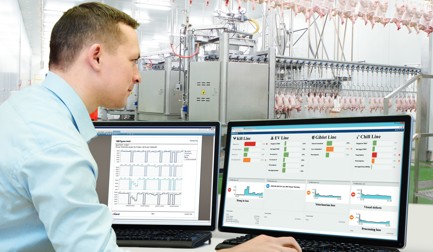Replicating butchery skills
“What butchers do in their workspace, we replicate here in an automated process. How do you pluck feathers from a chicken? What’s the best way to cut a chicken wing? About half of the people in our R&D department focus on such questions. Actions like bending the wing, making an incision, cutting the skin, bending further, cutting deeper, and removing the wing are translated into technology—that is, into machines, robots, and software. This requires specific knowledge of chicken anatomy and processing. It’s not without reason that everyone in our R&D department has completed courses at the SVO vocational training school for butchery.”
This replication of butchery skills goes deep. Allard Martinet explains, “A few years ago, there was a rise in demand for home-style chicken products with irregular, coarse breading. Translating that into an automated process was a real challenge. A machine can easily handle uniform breading, but creating that artisanal touch is far trickier. Yet, we succeeded with our RevoBreader.”
15,000 broilers per hour
Chicken drumsticks, nuggets, tenders in various shapes and sizes, with smooth or irregular breading, whole chickens, half chickens, skewers, chicken fillets weighing 100 or 150 grams—every chicken product imaginable can be made by Marel machines.
“Sometimes we supply a single machine, but more often, it’s dozens to hundreds of machines or even an entire factory. About 250 machines are involved in taking a live chicken and turning it into a product ready for sale,” Allard Martinet explains. “In recent years, there has been significant progress in efficiency. When I started here in 2005, our machines could process 10,000 broilers per hour. Now, it’s 15,000—over four per second.”
Such staggering numbers require innovative techniques. “In the past, line managers could monitor the process visually, but now it’s simply too fast. These days, they rely on data dashboards to track performance. AI software, smart camera systems, and sensors monitor quality. This shift toward automation, robotics, and digitization has accelerated dramatically in recent years—especially in poultry processing, unlike red meat, where many steps, such as deboning, are still done manually.”








